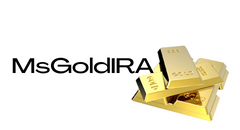
Introduction
As global equities experienced a slump following U.S. Federal Reserve chairman Jerome Powell's speech on Thursday, the crypto markets remained resilient, showcasing an overall market valuation of $1.4 trillion on Friday, November 10, 2023.
Bitcoin and Ethereum Navigate Through Market Uncertainty
Despite the drop in stocks after Powell's hawkish speech, the crypto economy continues to thrive, with a market valuation of $1.4 trillion and a 24-hour global trade volume of $167 billion. Bitcoin (BTC) dominance stands at 49.3%, while ethereum (ETH) dominance is at 17.4%.
Bitcoin Analysis
Bitcoin's recent price action indicates a positive uptrend, breaking through the $37,000 resistance zone before settling just above that range. The oscillators present a mixed bag of signals, with the relative strength index (RSI) at a high 83, suggesting potential overbought territory despite a neutral stance. The Stochastic holds at 74, maintaining neutrality, while the commodity channel index (CCI) stands at 162, hinting at a continued bullish run within a neutral zone.
Moving averages for bitcoin reveal a strong consensus for bullish sentiment across various time frames (10, 20, 30, 50, 100, and 200 days). The exponential moving averages (EMAs) and simple moving averages (SMAs) all signal a firm upward trend. Shorter-term EMAs like the 10-day at $35,481 reinforce recent gains, while longer-term averages such as the 200-day EMA at $28,496 confirm a solid upward trajectory over a more extended period.
The strength of bitcoin's bullish trend is further evident in its market behavior, with a notable 7.5% increase over the past week and an impressive 34.9% rise over the last month. This momentum is likely to attract speculative activity, driving prices to new heights before any corrective actions may occur. Investors can view this as a testament to bitcoin's resilience and its inherent value proposition in the market.
Ethereum Analysis
Examining ethereum (ETH), the second major player in the crypto realm, we observe a significant week-on-week gain of 17.4%, with the price currently at $2,097. However, ethereum's oscillators send warning signals, with an RSI at 80.3, indicating a possible correction, and an overly bullish Stochastic at 90.6 resting at neutral. The CCI exacerbates this caution with a high 262.3, reinforcing the bearish sentiment.
Ethereum's moving averages present a more positive outlook, similar to bitcoin's analysis, with all indicators from the 10-day to the 200-day averages signaling strong upward momentum. The disparity between the shorter-term EMA at $1,937.7 and the longer-term SMA (200-day) at $1,777.4 suggests potential overheating that could prompt a near-term correction while affirming the immediate bullish trend.
With a market capitalization of $252 billion, ethereum has experienced significant growth of 33.1% over the past month. The volume and market cap showcase ethereum's liquidity and trader interest, indicating a healthy market for ETH. However, the inflated oscillator values raise concerns about sustainability, urging traders to remain vigilant against potential volatility.
Conclusion
In conclusion, both bitcoin and ethereum demonstrate bullish trends, with bitcoin showing resilience and ethereum experiencing substantial growth. While caution is advised regarding potential corrective actions and volatility, the overall market sentiment remains positive. Investors and traders should closely monitor these cryptocurrencies' price actions and stay informed to make well-informed decisions.
Frequently Asked Questions
What is the cost of gold IRA fees
An Individual Retirement Account (IRA) fee is $6 per month. This includes the account maintenance fees and any investment costs associated with your chosen investments.
You may have to pay additional fees if you want to diversify your portfolio. These fees vary depending on what type of IRA you choose. Some companies offer checking accounts for free, while others charge monthly fees for IRA account.
A majority of providers also charge annual administration fees. These fees are usually between 0% and 1%. The average rate per year is.25%. These rates can often be waived if a broker, such as TD Ameritrade, is involved.
Is buying gold a good option for retirement planning?
Although it may not look appealing at first, buying gold for investment is worth considering when you consider the global average gold consumption per year.
The best form of investing is physical bullion, which is the most widely used. However, there are many other ways to invest in gold. The best thing to do is research all options thoroughly and then make an informed decision based on what you want from your investments.
If you don’t have the funds to invest in safe places, such as a safe deposit box or mining equipment companies, buying shares of these companies might be a better investment. If you need cash flow from an investment, purchasing gold stocks is a good choice.
You also can put your money into exchange-traded funds (ETFs), which essentially give you exposure to the price of gold by holding gold-related securities instead of actual gold. These ETFs often include stocks of gold miners, precious metals refiners, and commodity trading companies.
How much money should I put into my Roth IRA?
Roth IRAs are retirement accounts where you deposit your own money tax-free. You can't withdraw money from these accounts before you reach the age of 59 1/2. There are some rules that you need to keep in mind if you want to withdraw funds from these accounts before you reach 59 1/2. First, you can't touch your principal (the initial amount that was deposited). This means that no matter how much you contribute, you can never take out more than what was initially contributed to this account. If you wish to withdraw more than you originally contributed, you will have to pay taxes.
The second rule is that your earnings cannot be withheld without income tax. You will pay income taxes when you withdraw your earnings. For example, let's say that you contribute $5,000 to your Roth IRA every year. Let's also say that you earn $10,000 per annum after contributing. On the earnings, you would be responsible for $3,500 federal income taxes. You would have $6,500 less. Because you can only withdraw what you have initially contributed, this is all you can take out.
Therefore, even if you take $4,000 out of your earnings you still owe taxes on $1,500. On top of that, you'd lose half of the earnings you had taken out because they would be taxed again at 50% (half of 40%). So, even though you ended up with $7,000 in your Roth IRA, you only got back $4,000.
There are two types if Roth IRAs: Roth and Traditional. Traditional IRAs allow pre-tax contributions to be deducted from your taxable tax income. Your traditional IRA allows you to withdraw your entire contribution plus any interest. There is no limit on how much you can withdraw from a traditional IRA.
Roth IRAs won't let you deduct your contributions. But once you've retired, you can withdraw the entire contribution amount plus any accrued interest. There is no minimum withdrawal amount, unlike traditional IRAs. Your contribution can be withdrawn at any age, not just when you reach 70 1/2.
Statistics
- Indeed, several financial advisers interviewed for this article suggest you invest 5 to 15 percent of your portfolio in gold, just in case. (aarp.org)
- Contribution limits$6,000 (49 and under) $7,000 (50 and up)$6,000 (49 and under) $7,000 (50 and up)$58,000 or 25% of your annual compensation (whichever is smaller) (lendedu.com)
- If you accidentally make an improper transaction, the IRS will disallow it and count it as a withdrawal, so you would owe income tax on the item's value and, if you are younger than 59 ½, an additional 10% early withdrawal penalty. (forbes.com)
- This is a 15% margin that has shown no stable direction of growth but fluctuates seemingly at random. (smartasset.com)
- You can only purchase gold bars at least 99.5% purity. (forbes.com)
External Links
investopedia.com
- Are You a Good Candidate for a Gold IRA
- What are the Options Types, Spreads and Example. Risk Metrics











